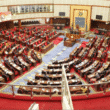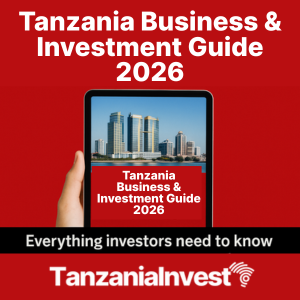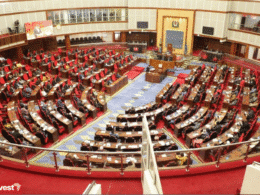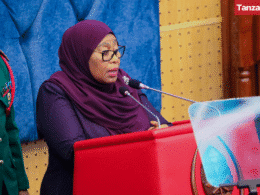A staff team from the International Monetary Fund (IMF), led by Nicolas Blancher, concluded a mission to Tanzania from September 17 to 24, 2025, to discuss economic and financial developments, the outlook, and program performance.
The IMF reported that Tanzania’s economic activity remains robust, with growth at 5.4% in the first quarter of 2025 and inflation at 3.4% year-on-year in August 2025.
The expansion has been driven by strong performance in the mining sector and healthy activity in agriculture, manufacturing, and construction.
Structural reforms are moving forward and are expected to accelerate to help Tanzania manage a challenging external environment, build climate resilience, and increase long-term growth potential.
According to Blancher, the positive outlook faces downside risks, including a slowdown in the global economy and trade, reduced foreign development assistance, and geoeconomic fragmentation.
Domestically, risks include fiscal pressures and possible reform slowdowns related to the upcoming national elections, as well as insufficient and erratic rainfall that could affect both growth and inflation.
The IMF noted that fiscal consolidation was paused in the 2024/25 financial year to accommodate higher spending on education and health, clear domestic arrears, and mitigate the impact of reduced foreign aid.
In 2025/26, strict implementation of the approved budget will be essential to create fiscal space for social spending while maintaining debt sustainability.
The recently launched Medium-Term Revenue Strategy is expected to enhance revenue mobilization and create fiscal space for investment in human capital.
Inflation has remained within the Bank of Tanzania’s 3–5% target range, enabling the central bank to reduce its policy rate to 5.75% from 6% while preserving price stability.
The IMF observed that increased exchange rate flexibility and improvements in the functioning of the foreign exchange market have brought more foreign exchange transactions back into the formal market, boosting liquidity and reducing the parallel market premium.
Continued enhancement of exchange rate flexibility will be critical for the development of the interbank foreign exchange market.
The current account deficit narrowed to 2.5% of GDP in 2024/25, supported by strong exports of minerals, agricultural products, and tourism services, alongside declining oil imports.
In 2025, high gold prices and strong tourist arrivals are expected to sustain export momentum and help maintain a moderate current account deficit.
Gross international reserves stood at USD 6.2 billion in July 2025, equivalent to about four months of prospective imports.
The IMF also emphasized the importance of accelerating reforms to achieve the objectives of Tanzania’s Vision 2050.
Key priorities include ensuring adequate resources for education and health in the context of a young and rapidly growing population, fostering private sector-led growth and job creation, and continuing implementation of climate reforms supported by the Resilience and Sustainability Facility and other development partners.
These measures aim to strengthen climate resilience, safeguard economic gains, and support sustainable growth.
During the mission, the IMF team met with senior government officials, development partners, private sector representatives, and civil society organizations.
The IMF expressed appreciation for the hospitality of the Tanzanian authorities and the constructive discussions held during the visit.










